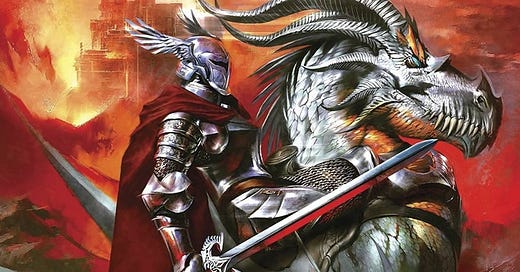The Greatest Dragonlance Fantasy Novel of the 80s - How to Write Heroic Chivalric Heroes - The Legend of Huma & Why Huma still matters as a Hero & Knight
Rennard as a Captain
So we return to the Legend of Huma once more!
Rennard selects Huma as one of his men for the scouting operation that lies ahead of them. And as said before Rennard is an interesting character who has had a troubled life and is something of a villain. But the thing is he’s not yet been revealed to be any such thing so for now gotta hol…



